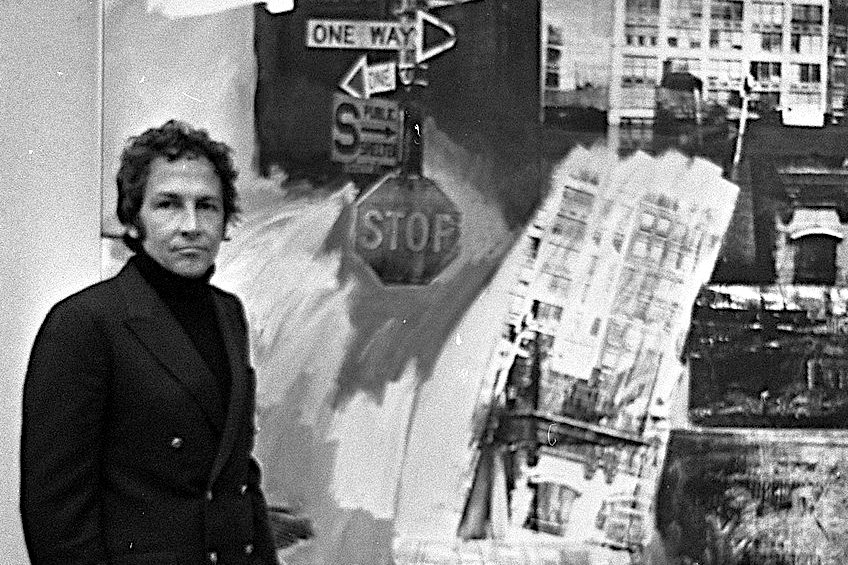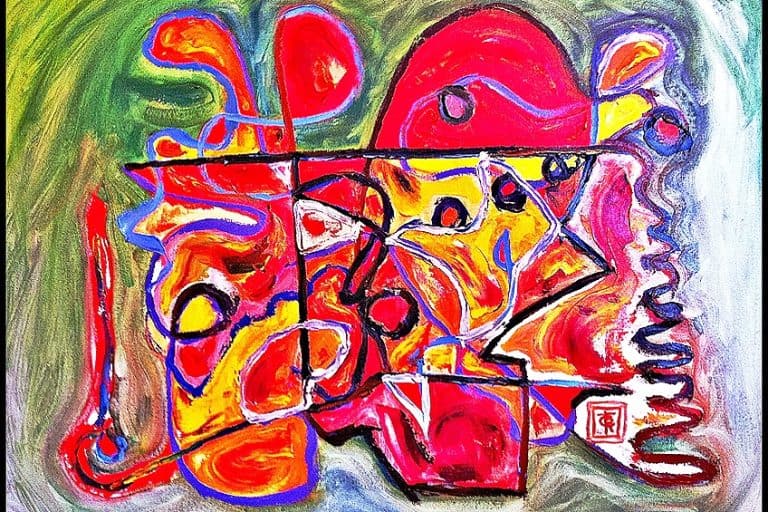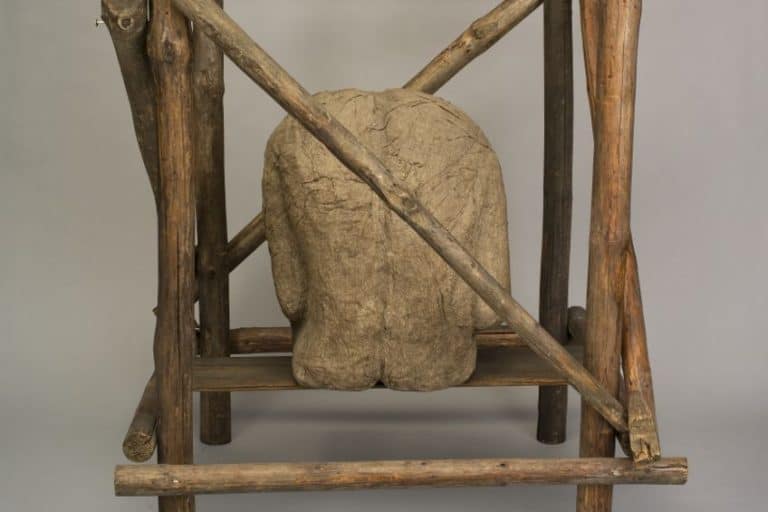Robert Rauschenberg – Explorer at the Intersection of Art and Life
Robert Rauschenberg is a name that ranks in the upper echelons of influential American artists. This article will introduce you to the prolific life and art of Robert Rauschenberg as well as some of this artist’s best artworks across assemblage, combines, painting, and performance.
A Brief Robert Rauschenberg Biography
Born in 1925 to parents of Dutch, Cherokee, and German descent, Milton Ernest Robert Rauschenberg grew up to become one of America’s most important graphic artists and painters. He is best known for his contribution to the field of sculpture and painting, more specifically, his work called Combines, created between 1954 and 1964, which combines painting and sculpture through the addition of everyday readymade objects onto a painting.
| Artist Name | Milton Ernest Rauschenberg (Robert) |
| Date of Birth | 22 October 1925 |
| Date of Death | 12 May 2008 |
| Nationality | American |
| Associated Movements | Pop, Neo-Dada, Abstract Expressionism |
| Mediums | Assemblage, sculpture, painting, photography, performance art, papermaking |
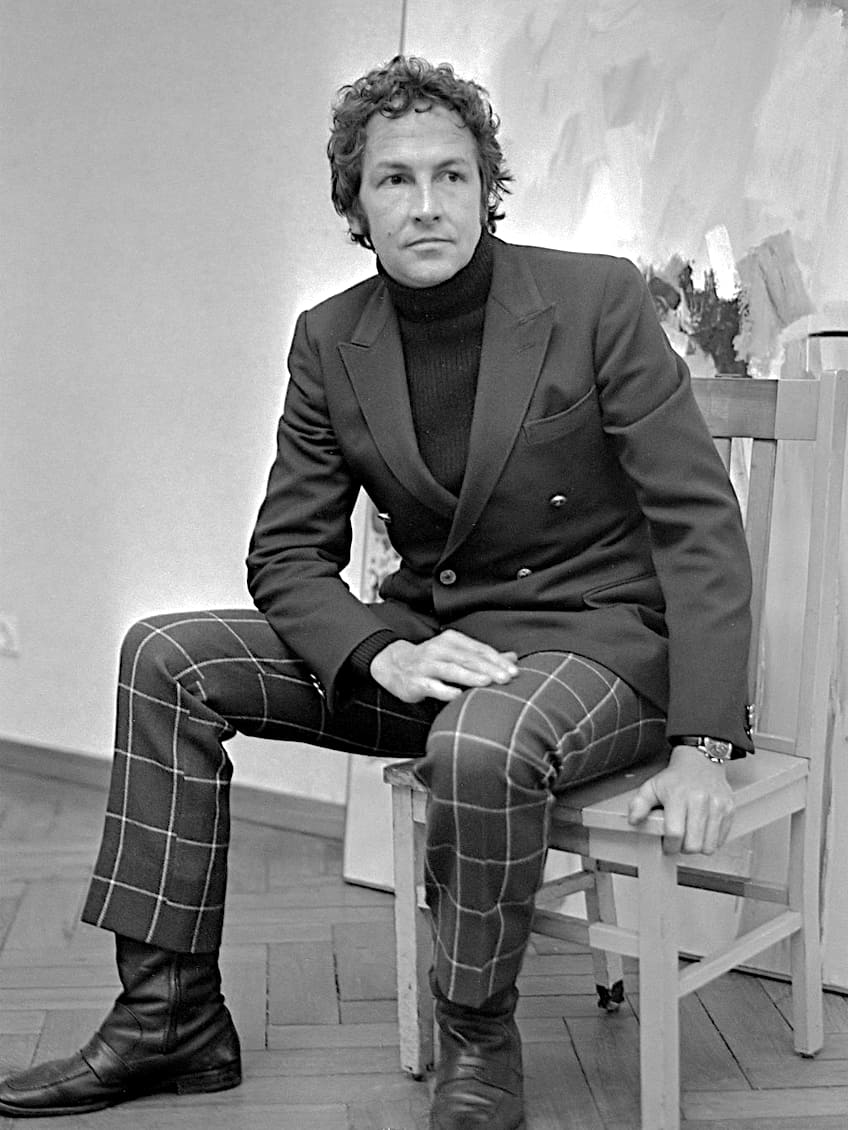
The Early Life of Robert Rauschenberg
Rauschenberg was born in Port Arthur, Texas to a father of German and Cherokee descent and a mother of Dutch descent. His father, Ernest R. Rauschenberg worked for a utility company and both of his parents were Fundamentalist Christians. Rauschenberg also had a younger sister called Janet Begneaud. Robert Rauschenberg did not immediately throw himself into pursuing art, instead, he attended the University of Texas where he studied pharmacology, but his dyslexia caused him to drop out. He was conscripted to the navy in 1944.
After his discharge in 1945, he studied art at the Kansas City Art Institute and later on, the Paris Académie Julian, beginning to use the name Robert instead of Milton. In 1948, he joined the North Carolina Black Mountain College where he encountered Josef Albers, one of the founders of the Bauhaus in Germany.
Rauschenberg had high hopes that Albers’ teachings might help remedy his “habitual sloppiness”, however, he did not find success in attempting to find an outlet for experimentation and instead moved on to find a more compatible leader such as John Cage, who was a well-established composer for avant-garde music. Cage promoted an experimentalist approach to music and offered Rauschenberg the support and attention he needed to develop his early career. Both Rauschenberg and Cage remained close friends for many years
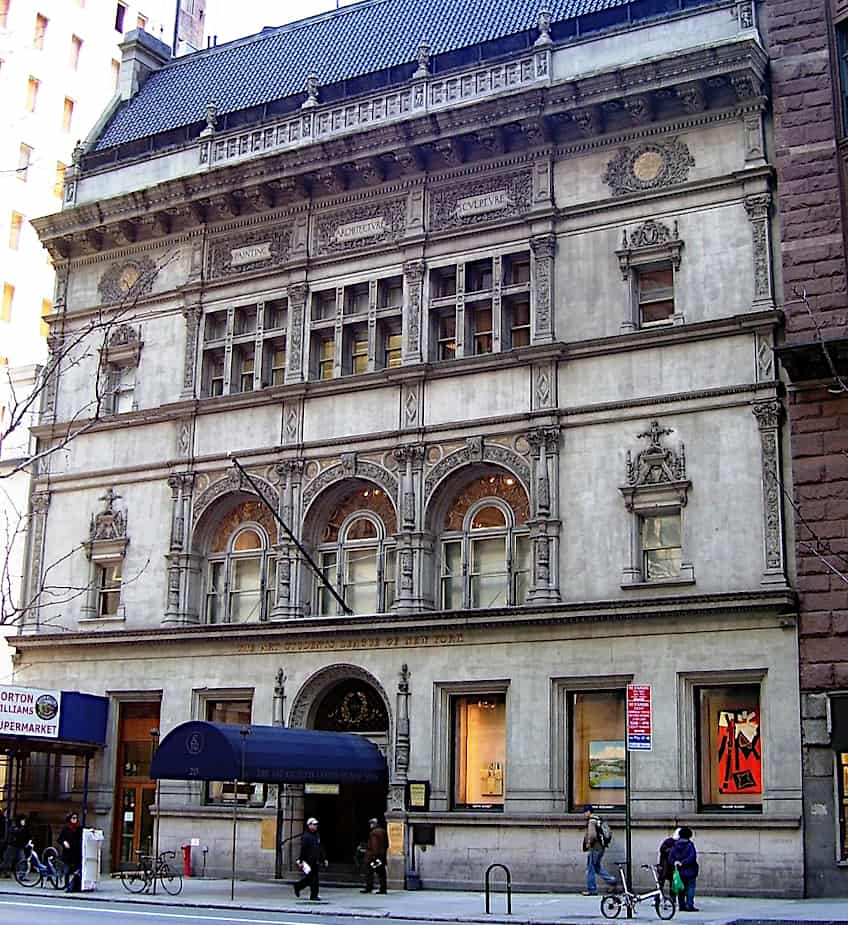
Between 1949 and 1952, Rauschenberg studied at the Art Students League of New York where he gained the acquaintance of Cy Twombly, Knox Martin, Vaclav Vytlacil, and Morris Kantor. Rauschenberg married Susan Weil in 1950 and two years after, separated, with one child, Christopher, who was born in 1951. Throughout 1950, Rauschenberg made a living by designing window displays for stores such as Tiffany & Co. in collaboration with Weil and Jasper Johns. During this time, he went under the pseudonym Matson Jones.
Rauschenberg later had many romantic partners with artists such as Jasper Johns and Cy Twombly. Rauschenberg later settled down with his partner Darryl Pottorf, who was his former assistant who he spent the last 25 years of his life with. In 1968, the artist secured a beach house on Captiva Island, which soon became his permanent residence.
After his move to New York, Rauschenberg ventured into the field of dance and partook in John Cage’s 1952 production called Theatre Piece No. 1. It was in the 1950s that Rauschenberg began working on set designs and by the 1960s, he partook in a variety of dance-theater productions at Judson Memorial Church, where he choreographed his first performance work called Pelican (1963).

Rauschenberg’s involvement with the Merce Cunningham Dance Company also resulted in a world tour in 1964 and later on, a series of performances called the Open Score for 9 Evenings: Theatre and Engineering at the New York 69th Regiment Armory. This series was also crucial to the establishment of the Experiments in Art and Technology non-profit organization in 1967.
Rauschenberg was also invited by NASA in 1969 to attend the launch of Apollo 11 and this resulted in a series of moon-inspired lithographs called the Stoned Moon series. Here, Rauschenberg combined images from NASA’s archives with drawings, texts, and diagrams of his own.
Throughout Rauschenberg’s career, he often utilized found materials for the purpose of highlighting the urban environment and included the use of natural fibers, paper, and textiles in his paintings and prints. Some of the most interesting Rauschenberg prints involve his use of a solvent-transfer method to produce works like Spread, a series created between 1975 and 1982, which featured large stretched fabric assembled in a collage manner on wooden panels.

Global travel also played a major role in the artistic process of Rauschenberg’s career after 1975 and in 1984, he partook in a formal venture called the Rauschenberg Overseas Culture Interchange in partnership with the United Nations, which was almost completely funded by Rauschenberg himself. By the 1980s, Rauschenberg began focusing on silkscreen production using a variety of different treated metal surfaces and created a number of series for these metal paintings. Rauschenberg can be admired for his rudimentary approach to technique and engagement with technology that elevates his works.
In one of his painting series executed in 1996, Arcadian Retreats, Rauschenberg transferred digital inkjet photographs to a wet fresco while simultaneously ensuring his environmentally friendly approach to the series by using biodegradable pigments and water as opposed to the chemicals of the transfer process.
Throughout his lifetime, Rauschenberg made many posters in support of different causes and took on many commissions, including an illustration for Life magazine, that the artist used as an opportunity to voice his opinion on the Vietnam War. Another one of the most famous Robert Rauschenberg prints is the commissioned color lithograph for the Metropolitan Museum of Art in celebration of the institution’s centennial. Rauschenberg created a Centennial Certificate based on the museum’s original goals detailed from an 1870 certificate and imagery of some of the museum’s best artworks. Other commissions included works for the Miami Herald publication, BMW, as well as the Vatican.
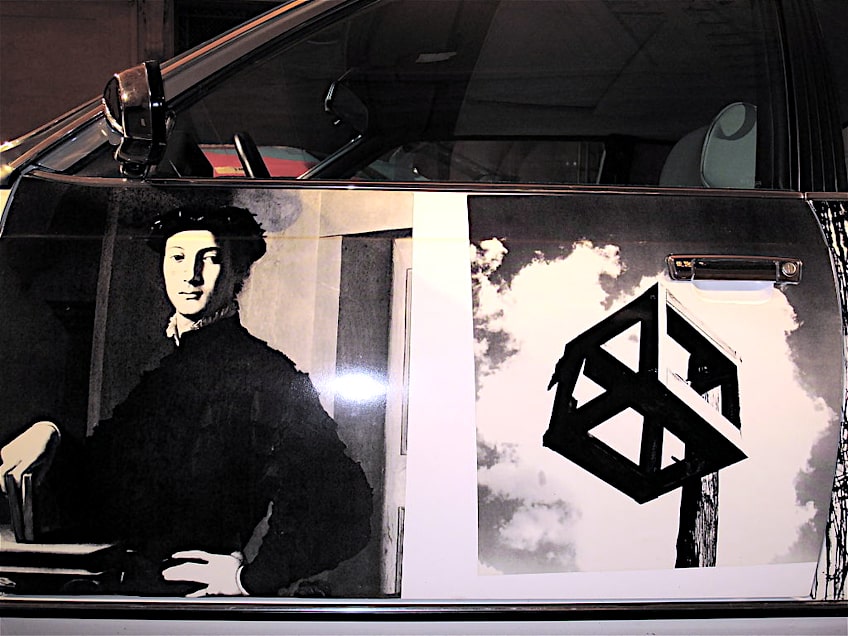
In addition to being a sculptor and painter, Rauschenberg also specialized in papermaking, photography, and performance art. Throughout his 60-year career, Rauschenberg also received many awards with the most prominent being the National Medal of Arts in 1993 and the 1964 International Grand Prize in painting for the 32nd Venice Biennale.
The Art of Robert Rauschenberg
The art of Robert Rauschenberg is often defined as part of the Neo-Dadaist style, which was informed by the idea of merging art and life and evoking the in-between moments of playfulness, appropriation, and iconoclasm. The Neo-Dada movement is also considered the precursor to other global movements such as Pop art, Nouveau Réalisme, and Fluxus.
Rauschenberg is a great artist to study when looking at art incorporating ready-mades, everyday objects, and their place in fine art. The idea of appropriating everyday objects into art was sparked by Marcel Duchamp’s Fountain in 1917, which was presented as a readymade sculptural object (a porcelain urinal).
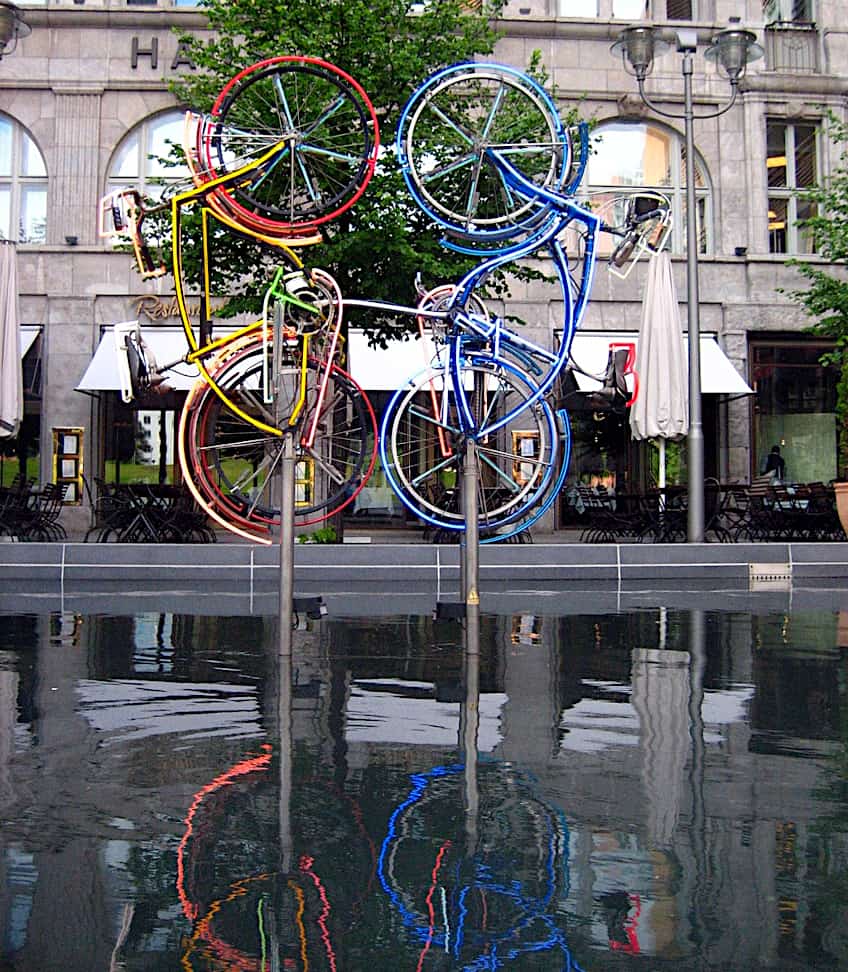
While studying at Black Mountain College, Rauschenberg was able to experiment with various mediums such as photography, sculpture, printmaking, drawing, and even theater. Some of his works also display a combination of the fine arts, which can be seen in his series called Night Blooming (1951) where he pressed gravel and pebbles into black pigment on a canvas. His collaborative work with his ex-wife Susan Weil was also quite interesting as the duo made full-sized body prints in their New York apartment with the hopes of turning them into wallpaper or screen designs.
Between 1952 and 1953, Rauschenberg ventured to North Africa and Italy with his previous partner and artist, Cy Twombly, where he created collages and sculptures using found materials. The result was two small sculptures called Feticci Personali (1952-1953) and Scatole Personali (1952-1953), which he exhibited in Florence and Rome.
Many of his works were successful but those that did not sell ended up at the bottom of the Arno River. A strange way to get rid of unwanted art indeed. According to an account, the suggestion was made by an art critic who reviewed Rauschenberg’s show and Rauschenberg took this quite literally.
Famous Robert Rauschenberg Artworks
After his trip, Rauschenberg started using found materials from his neighborhood in the Lower Manhattan area to create sculptures out of wood, twine, and scrap metal. In producing many paintings and prints, Rauschenberg also supported a number of commissions from different organizations for posters in support of various socio-political and environmental issues. Below, we will explore a few famous Robert Rauschenberg artworks that carry intriguing messages and backstories.

Erased de Kooning Drawing (1953)
| Date | 1953 |
| Medium | Traces of drawing media on paper with label and gilded frame |
| Dimensions (cm) | 64.1 x 55.2 x 1.3 |
| Where It Is Housed | San Francisco Museum of Modern Art, San Francisco |
In 1953, Rauschenberg made a request for a drawing from Willem de Kooning, a popular Abstract Expressionist. The reason behind Rauschenberg’s request was so that he could transform it into a new artwork by erasing it and making an artistic statement to serve as a conceptual piece of art itself. With de Kooning’s approval, Rauschenberg fulfilled his desire and titled the artwork Erased de Kooning Drawing (1953).
Later on, Jasper Johns had the drawing framed and added a small caption to mimic the style of the frame from the Royal Academy and monogramming derived from Renaissance prints and drawings. The drawing has remained at the San Francisco Museum of Modern Art since 1998, which described the drawing as an artwork with traces of media on paper.

While some accept the conceptual nature of Rauschenberg’s drawing, others argue that the act of erasure in the work reflects Rauschenberg’s relationship with the collective called The American Action Painters. In 1961, Rauschenberg presented a similar conceptual submission to the Galerie Iris Clert where the brief required artists to present portraits of Iris Clert. Rauschenberg’s submission was accompanied by a telegram that stated his artwork was a portrait only if he declared that it was.
The best part of the drawing is that no one, aside from Rauschenberg, Kooning, and perhaps Johns, knew what the original drawing looked like. There exists no traces or photographic documentation of the original Kooning drawing before its erasure aside from the memories of the above-mentioned artists.
In 2010, however, the San Francisco Museum of Modern Art (SFMOMA) began a project that produced digital images that showed the remaining traces of the underlying drawings. The original markings show several figures facing different angles with one appearing to be female and was most likely executed in charcoal and pencil. The SFMOMA purchased the drawing in 1998 through a gift from Phyllis Wattis.
Bed (1955)
| Date | 1955 |
| Medium | Oil and pencil on pillow, quilt, and sheet on wood supports |
| Dimensions (cm) | 191.1 x 80 x 20.3 |
| Where It Is Housed | The Museum of Modern Art, New York City |
Bed (1955) is one of Rauschenberg’s first artworks in his famous series Combines that features an arrangement of used bedding materials scribbled with pencil markings and paint splotches. The bedclothing is presumably said to belong to the artist himself and is considered to be a kind of self-portrait. This personal self-portrait invites the viewer into the intimate materials of the artist and the witness to Rauschenberg’s resting place.
It is believed that Rauschenberg most likely used the bedding materials as an alternative to canvas due to his financial situation and is a perfect representation of his phrase where he relates painting to both life and art.
The arrangement of the artwork resembles the composition of a bed hung onto a wall as a work of art. The idea of the bed loses its original function but retains its associative meanings around the ideas of sleep, dreams, sex, and the unconscious, which are all intimate activities that occur on the bed. Art critics have also suggested that liquid materials like the paint allude to the morbid side of the “painting” and appear violent in nature.
Monogram (1955 – 1959)
| Date | 1955 – 1959 |
| Medium | Oil, paper, fabric, printed reproductions, metal, wood, rubber shoe-heel, tennis ball on two conjoined canvases, oil on taxidermized Angora goat, brass plaque, and rubber tire on a wood platform mounted on four casters |
| Dimensions (cm) | 106.7 × 160.7 × 163.8 |
| Where It Is Housed | Moderna Museet, Stockholm |
Described by art critics as Rauschenberg’s most famous artwork, Monogram is a combine painting, which features a stuffed Angora goat and combines a painted canvas with a free-standing sculpture. The sculptural painting took on three lives; the goat from the painting was initially positioned on a shelf next to another mounted painting that was later called Rhyme (1956) but this composition was amended by Rauschenberg because he disliked the fact that you could only view the goat from one angle.
The second iteration of Monogram was in 1956 and Rauschenberg had the goat encircled by a tire with the tread painted white while mounted on a narrow platform made of wood with a vertical extension on the posterior. Here, one section of the vertical panel was painted and collaged but the artist was again dissatisfied and felt that the goat seemed to be pulling the painting.
The final realization of the sculptural painting occurred in 1959 after a suggestion was made by Jasper Johns for Rauschenberg to place a square panel on casters and to center the goat as if it were naturally in a pastoral setting. Robert Hughes, an art critic described the homoerotic themes embedded in the painting, the goat being a symbol of lust. Therefore, the painting was one of the most profound references to anal intercourse that emerged from the psyche of Modern art. Monogram was also likened to a remake of The Scapegoat (1854 – 1856) by the pre-Raphaelite painter, William Holman Hunt.
Winter Pool (1959)
| Date | 1959 |
| Medium | Oil, paper, fabric, wood, metal, sandpaper, tape, printed paper, printed reproductions, handheld bellows, and found painting, on two canvases, with ladder |
| Dimensions (cm) | 229.9 x 151.1 x 10.2 |
| Where It Is Housed | The Metropolitan Museum of Art, New York |
This is one of Rauschenberg’s first paintings to enter the collection at the Metropolitan Museum of Art in New York and is an excellent example of the artist’s contribution to the fields of painting and sculpture in the 50s and 60s.
Winter Pool (1959) was executed in a Cubist collage style as part of the genre Rauschenberg called Combines and consists of pasted papers on two canvases separated by a wooden ladder with its legs extending to the floor.
The extension of the ladder’s legs is a gesture to invite the spectator to engage with the artwork and climb into the image. While the interpretation of the assemblage is left to the viewer, the composition is informed by syncopated grids made up of found materials such as poster letters, photograph reproductions, shirt cuffs, and handkerchiefs.
Glacial Decoy Series: Lithograph IV (1980)
| Date | 1980 |
| Medium | Lithograph on paper |
| Dimensions (cm) | 168 x 102.2 |
| Where It Is Housed | Tate Gallery, London |
The Glacial Decoy Series was a series of lithographs that Rauschenberg created in 1979 and are important since they are the artist’s first attempt at making a series of six etchings. Rauschenberg used his personal photographs and had them photoetched to produce these cool-toned striking prints. Following this, he created four other similar lithographs that were larger than the etchings and were much brighter and more expansive in visual composition. Rauschenberg employed monotone printing coupled with photographs that were sometimes doubled and reversed.
Robert Rauschenberg Book Recommendations
Robert Rauschenberg is one of the most diversely talented artists with such a unique background that it is hard to simply stop exploring his artwork here. Below, you will find a list of top book recommendations to help broaden your examination of the artist and his work.
Robert Rauschenberg: Works, Writing, Interviews (2007) by Robert Rauschenberg and Sam Hunter
This hardcover copy of Robert Rauschenberg: Works, Writing, Interviews by Sam Hunter and Robert Rauschenberg will provide you with exactly what the title suggests. The book features full-color reproductions of Rauschenberg’s seminal works, from his Combines series to his silkscreen paintings. The book also includes key interviews with Robert Rauschenberg in conversation with Richard Kostelanetz and Alain Sayag. This is the ideal buy for anyone looking for a general overview of some insightful Robert Rauschenberg facts and artworks.
- Includes full-color illustrations of Rauschenberg's most seminal works
- Features important interviews with the artist and his own writings
- Covers events at ROCI - Rauschenberg's own exhibition organization
Robert Rauschenberg (2016) by Leah Dickerman, Achim Borchardt-Hume, Robert Rauschenberg, et al.
If you are looking for a comprehensive overhaul of the work of Robert Rauschenberg, look no further. This book features 16 short essays by various scholars and writers who explore the different influential turning points in the artist’s career, including his inventions around intermedia and his exploration of silkscreen painting, photography, and printmaking. The book also draws attention to the aspects of Rauschenberg’s career that were not often documented and offers an in-depth examination of the artist’s 60-year-long contribution to American art and culture.
- Comprehensive survey of the life and art of Robert Rauschenberg
- The short essay format provides multiple interpretations and insights
- Spans the full range of Rauschenberg's extensive artistic production
Robert Rauschenberg: An Oral History (The Columbia Oral History Series) (2019) by Sara Sinclair, Peter Bearman, and Mary Marshall Clark
This oral Robert Rauschenberg biography is a collaborative piece that narrates the life and art of one of the 20th century’s best artists. The artist’s rebellion against traditional methods of creating as well as interviews with those who knew him and some interesting Robert Rauschenberg facts can be found in this book. Oral historian Sara Sinclair highlights the relationships between the artist’s artistic career and social life and follows Rauschenberg’s journey across the globe, shedding light on his personal world and its impact on his art. This read is perfect for those who wish to catch a glimpse into the personal world of Robert Rauschenberg.
- Truly unique way of understanding of Rauschenberg's life and impact
- Charts the role of the artist's social life and relationships in his art
- The disjunctive collaborative format echoes the artist's own artmaking

Robert Rauschenberg spent the rest of his career living and operating from New York and his home on Captiva Island, Florida until his death in 2008. Robert Rauschenberg was an innovative artistic revolutionary whose work paved the way for development in the fields of painting, sculpture, and printmaking.
Frequently Asked Questions
Why Is Robert Rauschenberg Considered an Important Artist?
Robert Rauschenberg is considered an important artist due to his contribution to the fields of painting and sculpture as well as his innovative approach to printmaking that combined technology and art. He is admired for his Combines (1954-1964) series and works that incorporate readymade and found materials into paintings to bridge the gap between art and life. Rauschenberg is also responsible for advocating for compensation on resale royalties regarding the sale of an artist’s artwork in the secondary market in the state of California.
What Is the Most Expensive Robert Rauschenberg Silkscreen Painting?
The most expensive Robert Rauschenberg silkscreen painting was sold for $78 million in 2019 at Christie’s New York. The silkscreen painting was a work titled Buffalo II, made in 1964.
What Movements Are Affiliated With Robert Rauschenberg?
Robert Rauschenberg is affiliated with the Pop Art, Abstract Expressionist and Neo-Dada movements, which was informed by his transformational approach to understanding the use of art materials in creative processes for painting, sculpture, and printmaking.
Isabella studied at the University of Cape Town in South Africa and graduated with a Bachelor of Arts majoring in English Literature & Language and Psychology. Throughout her undergraduate years, she took Art History as an additional subject and absolutely loved it. Building on from her art history knowledge that began in high school, art has always been a particular area of fascination for her. From learning about artworks previously unknown to her, or sharpening her existing understanding of specific works, the ability to continue learning within this interesting sphere excites her greatly.
Her focal points of interest in art history encompass profiling specific artists and art movements, as it is these areas where she is able to really dig deep into the rich narrative of the art world. Additionally, she particularly enjoys exploring the different artistic styles of the 20th century, as well as the important impact that female artists have had on the development of art history.
Learn more about Isabella Meyer and the Art in Context Team.
Cite this Article
Isabella, Meyer, “Robert Rauschenberg – Explorer at the Intersection of Art and Life.” Art in Context. April 11, 2023. URL: https://artincontext.org/robert-rauschenberg/
Meyer, I. (2023, 11 April). Robert Rauschenberg – Explorer at the Intersection of Art and Life. Art in Context. https://artincontext.org/robert-rauschenberg/
Meyer, Isabella. “Robert Rauschenberg – Explorer at the Intersection of Art and Life.” Art in Context, April 11, 2023. https://artincontext.org/robert-rauschenberg/.


